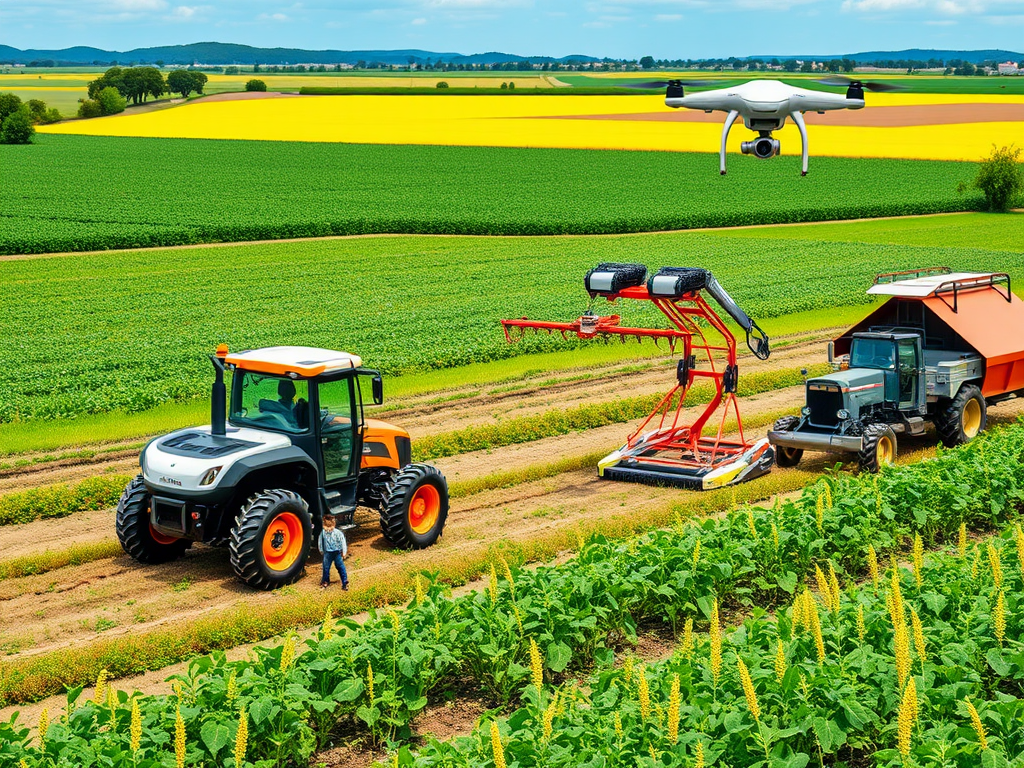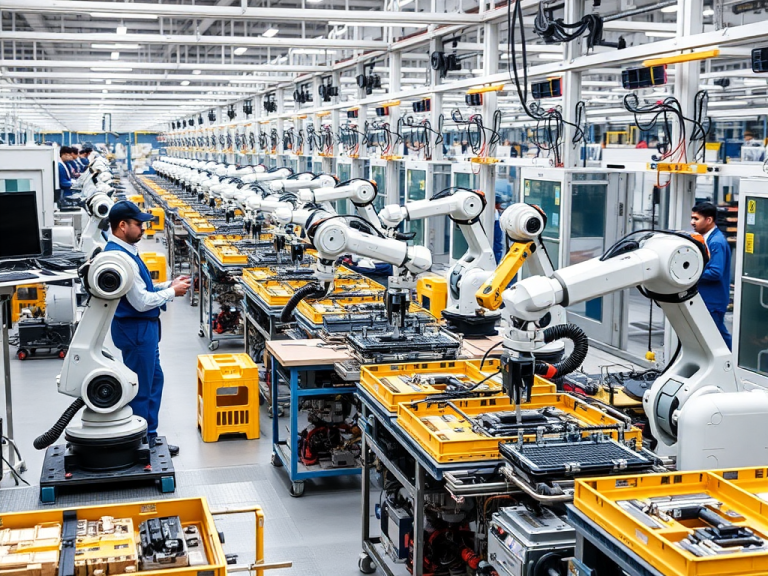
Introduction
Farming has changed a lot over the years, and one of the biggest changes is the use of robots. As the world’s population grows, we need more food, which means we have to find new ways to farm. Robotics in agriculture is helping farmers work better, save money, and take care of the environment. This article explores how robots are transforming farming practices and the benefits and challenges they bring.
How Robotics is Used in Farming
1. Automated Machines
Robots like self-driving tractors and harvesters can do many farming tasks on their own. These machines are equipped with advanced technology, such as sensors and GPS, allowing them to navigate fields accurately. They can plow fields, plant seeds, and harvest crops without needing a human to control them. This automation saves time and helps farmers increase their production.
For example, an automated tractor can work throughout the day and night, ensuring that planting and harvesting are done on time, even in large fields. This efficiency allows farmers to meet the growing demand for food.
2. Drones
Drones are small flying machines that can take pictures and gather information about crops from the sky. Equipped with cameras and sensors, they help farmers check how healthy their plants are, find pests, and see if crops need more water. By flying over fields, drones provide a bird’s-eye view that is hard to achieve on the ground.
Farmers can use the data collected by drones to create detailed maps of their fields. This information helps them make better decisions about where to apply fertilizers or pesticides, ensuring that they are used only where needed.

3. Precision Farming
Robots play a crucial role in precision farming, which focuses on using resources wisely and efficiently. For instance, instead of spreading fertilizers evenly across an entire field, robots can analyze the soil and apply nutrients only to areas that need them. This targeted approach not only saves money but also reduces the risk of water pollution.
By using sensors and data analytics, farmers can monitor crop conditions in real time. This means they can respond quickly to problems, such as drought or disease, which can save entire harvests.
4. Weeding and Pest Control
Some robots are specifically designed to identify and remove weeds. Using advanced imaging technology, they can distinguish between crops and unwanted plants. This capability allows them to remove weeds without harming the crops, reducing the need for chemical herbicides.
Additionally, robots can be used to monitor for pests. By scanning fields and detecting signs of infestation early, farmers can take action before the pests cause significant damage.
Benefits of Robotics in Agriculture
1. More Efficiency
Robots can handle repetitive tasks, allowing farmers to focus on important decisions and creative aspects of farming. This leads to higher productivity and better use of their time. With robots doing the heavy lifting, farmers can manage larger areas and grow more crops.
2. Cost Savings
While buying robotic equipment can be expensive, it can save money in the long run by reducing labor costs and increasing crop yields. For example, a robot that can work continuously without breaks can complete tasks faster than human workers, reducing the overall cost of labor.
3. Sustainability
Robots help farmers use fewer resources and chemicals, which is good for the environment. They promote sustainable farming practices by minimizing waste and reducing the ecological footprint of agriculture. By using less water and fewer fertilizers, farmers can protect local ecosystems and contribute to healthier soil.
4. Solving Labor Shortages
Many farms struggle to find enough workers, especially for physically demanding tasks. Robotics can take over these tough jobs, helping farmers maintain their production levels even with fewer workers available. This is especially important during peak seasons when the demand for labor is high.
5. Improved Crop Quality
With the precision offered by robots, farmers can ensure that crops receive the right amount of care. This leads to healthier plants and better-quality produce. By monitoring conditions closely, farmers can produce higher yields of fruits and vegetables that meet market standards.
Challenges to Consider
Despite the benefits, there are challenges:
- High Initial Costs: Buying robots can be too expensive for small farms. The investment needed for advanced machinery may deter some farmers from adopting new technologies.
- Need for Training: Farmers may need to learn how to use and maintain new technology. This can require additional time and resources, which might be a barrier for some.
- Adjusting Farming Practices: Changing traditional methods to include robots requires careful planning. Farmers need to consider how new technologies fit into their existing practices and what adjustments are necessary.
- Technical Issues: Like any technology, robots can malfunction or require repairs. Farmers need to be prepared for potential downtime and have plans in place to manage these challenges.

Conclusion
Robotics is changing the way we farm, making it smarter and more efficient. As technology continues to improve, the use of robots in agriculture promises to help us grow enough food while also protecting the environment. Embracing these changes is important for the future of farming and feeding the world. By investing in robotics, farmers can not only enhance their productivity but also contribute to a more sustainable and resilient agricultural system for generations to come.






